Ah, the subtle dance of expectation and experience. Have you ever felt that faint prickle of disappointment, perhaps a sigh escaping your lips, when an interaction with an artificial intelligence felt… hollow? You sought information, maybe even a touch of assistance, but were met with a response so sterile, so devoid of character, it was like conversing with a beautifully polished, yet ultimately empty, vessel. That feeling, that yearning for something more than just functional code, is precisely where our journey begins today.
We stand at a fascinating juncture in technological evolution, don’t we? Artificial intelligence is rapidly weaving itself into the very fabric of our digital lives. But what truly separates a fleeting digital transaction from a memorable, engaging interaction? I propose it’s the presence of a thoughtfully crafted AI Persona.
Now, when I speak of an AI persona, I’m not merely referring to a chatbot that parrots pre-programmed phrases, or a voice assistant that executes commands with robotic precision. No, an AI persona is something far more profound. It is the consistent, relatable, and intentional representation of an AI’s identity – its digital soul, if you will. In an increasingly crowded digital landscape, where genuine connection is a prized commodity, the ability for an AI to present a coherent and engaging persona is paramount. It’s about fostering trust, enhancing user experience, and ensuring your brand’s digital ambassador resonates authentically.
But why invest this effort? “Isn’t functionality king?” one might reasonably ask. The strategic imperative, however, is undeniable. A well-defined AI persona is a powerful catalyst for enhancing user engagement, transforming mundane interactions into opportunities to build genuine rapport. It serves to strengthen brand identity and recall, making your AI an unforgettable touchpoint. Consider the impact on improving task completion and overall user satisfaction when users feel understood and pleasantly guided. The applications are vast and vital, from revolutionizing customer service with empathetic support, to empowering content generation with a distinct voice, to creating truly helpful virtual assistants that feel like partners rather than just tools.
This brings us to the central question: Why should one invest the intellectual rigor in developing a nuanced AI persona rather than settling for a purely functional interface? Is it merely an aesthetic flourish, a decorative layer upon the algorithms, or does it tap into something more fundamental, something deeply ingrained in the way we humans are wired to connect and interact, even with intelligence of our own creation?
Let’s explore these questions in this post, shall we?
Okay, let us embark on this intellectual expedition, dissecting the very architecture of AI persona creation. We’ve explored the ‘why’; now, let’s meticulously examine the ‘how,’ moving from the foundational blueprints to the enduring legacy of these digital entities.
Laying the Foundation: Pre-Production Steps for Your AI Persona

Before a single line of persona-specific code is written, before a witty opening line is even conceived, a rigorous foundational phase is paramount. One simply doesn’t stumble into a compelling AI persona. It is engineered with foresight and precision. Consider this the crucial surveying and ground-preparation stage before erecting a magnificent structure.
- A. Defining Purpose and Goals: The “North Star” of Your Persona. What, precisely, is this AI persona meant to achieve? Is it to guide users through complex software, offer empathetic customer support, or perhaps embody a brand’s playful spirit in marketing campaigns? Without a clearly articulated purpose, your persona risks becoming a charming but ultimately aimless creation. This “North Star” dictates its core functions – will it primarily inform, transact, entertain, or console? And, critically, who is the intended audience? A persona designed to assist seasoned software developers will, and indeed must, differ vastly from one created to engage prospective university students. How often, I wonder, do projects go adrift because this fundamental step of defining a clear, measurable purpose is treated as a mere formality rather than the bedrock it truly is?
- B. Comprehensive Research and Data Gathering: Understanding the Ecosystem. Once the purpose is set, we must immerse ourselves in the world the persona will inhabit. This is not a time for assumptions; it’s a time for empirical investigation.
- User Research: This is where the technical meets the human. We employ surveys, conduct one-on-one interviews, perhaps even convene focus groups with your target audience. We delve into existing user data – demographics, psychographics, online behavior, pain points. What are their expectations when interacting with an AI? What are their communication preferences?
- Brand Analysis: The AI persona is an extension of your brand. Its values, voice, and mission must be intricately woven into the persona’s fabric. Is your brand authoritative and formal, or approachable and innovative? Consistency here is not just aesthetic; it’s fundamental to trust and brand coherence.
- Competitive Analysis: Observe the digital landscape. Are there existing AI personas in your domain? What approaches have they taken? Where are the gaps, the opportunities for differentiation, the chances to create something truly unique and more effective? But let me pose this: while analyzing competitors, how do we ensure we’re drawing inspiration for differentiation, rather than inadvertently drifting towards imitation?
- C. Ethical Considerations and Defining Boundaries: The Moral Compass. This is, perhaps, the most critical stage, demanding profound introspection and foresight. As creators, we bear a significant responsibility.
- Bias Detection and Mitigation: AI models learn from data. If that data reflects existing societal biases (related to gender, race, age, culture, or language), the AI persona can perpetuate and even amplify them. Rigorous auditing of training data and ongoing assessment for biased outputs are non-negotiable. From a technical standpoint, this involves careful data curation, potentially algorithmic bias detection tools, and diverse human oversight.
- Transparency: Should users always be aware they are interacting with an AI? While the allure of a perfectly human-like AI is strong, ethical considerations around potential deception often necessitate clarity. What are the implications of users forming emotional bonds with an entity they don’t realize is artificial?
- Data Privacy and Security: How will the persona handle user data? What are the safeguards? This must align with regulations like GDPR, CCPA, and evolving privacy norms. The persona’s design must inherently respect user confidentiality.
- Defining Limitations: It’s crucial to establish what the AI persona should not say or do. This includes avoiding harmful advice, refusing to engage in inappropriate topics, and gracefully handling situations beyond its programmed capabilities or ethical boundaries. At what juncture does striving for an “engaging” persona risk crossing into manipulative territory, and what technical and ethical safeguards can we implement to prevent such transgressions? This isn’t just a philosophical quandary; it requires clear, actionable guidelines.
Core Characteristics to Sculpt: The DNA of Your AI Persona

With the foundation firmly in place, we can begin to sculpt the very essence of the AI persona—its unique DNA. These are the discernible traits that will define its interactions and shape user perception. Think of this as selecting the materials, textures, and defining features that will make your architectural design distinct and memorable.
- A. Personality Traits: The “Who” of the AI. This is where the persona truly begins to take form beyond mere functionality. Will it be witty and playful, calm and reassuring, intellectually curious, or strictly formal? Frameworks like the Big Five personality traits (Openness, Conscientiousness, Extraversion, Agreeableness, Neuroticism) or archetypal models can serve as initial inspiration, but the goal is to define a consistent set of traits that align with the persona’s purpose and brand. For instance, a persona for a financial advisory AI might lean towards conscientiousness and agreeableness, while one for an entertainment platform might embody openness and extraversion. But how do we translate these abstract traits into concrete conversational behaviors and algorithmic responses? What technical frameworks allow for such nuanced expression?
- B. Tone and Language Style: The “Voice” of the AI. The chosen personality traits directly inform the persona’s voice. This encompasses:
- Formality: Will it use formal salutations and complex sentence structures, or adopt a more casual, conversational style with contractions and colloquialisms?
- Lexicon: Will it employ industry-specific jargon (appropriate for a specialized audience) or plain language? Will it use slang, humor, or metaphors? If so, to what extent and in what context?
- Sentence Structure: Short, direct sentences versus longer, more elaborate ones.
- Emotional Expression: The capacity for expressing empathy, enthusiasm, or even neutrality, all conveyed through word choice and phrasing. This is where Natural Language Generation (NLG) techniques become crucial in ensuring the language feels authentic to the persona.
- C. Expertise and Knowledge Domain: The “What It Knows.” A persona’s credibility often hinges on its perceived expertise.
- Scope and Depth: Clearly define the boundaries of its knowledge. Is it an expert in a narrow field or a generalist? How deep does its understanding go?
- Handling Ignorance: Crucially, how does the persona respond when faced with questions outside its designated domain? A well-designed persona will admit its limitations gracefully rather than fabricate answers or become evasive. This is key to maintaining user trust. Technically, this involves robust intent recognition and well-defined fallback responses.
- D. Background and Story (Optional but Powerful): Adding Depth. While not always necessary, a fictional background or origin story can make a persona more memorable, relatable, and engaging. It might be a narrative about its “creation,” its “purpose,” or even a few curated “experiences.” This story must, of course, be consistent with the brand and the persona’s overall identity. For instance, a persona for a space exploration game might have a backstory tied to a fictional space agency. Is there a risk, though, that an overly elaborate backstory could feel contrived or overshadow the persona’s primary function? Where is the balance?
- E. Visual Representation (If Applicable): The “Face” of the AI. For many AI personas, particularly chatbots or virtual assistants, a visual element like an avatar, icon, or even a specific color scheme can significantly enhance recognition and connection.
- Design Principles: The visual design should be a direct reflection of the personality traits and brand identity. A sleek, minimalist avatar might suit a technologically advanced persona, while a softer, more organic design could fit an empathetic one.
- Accessibility: Ensure visual elements are accessible to all users, including those with visual impairments (e.g., sufficient contrast, alt text for images).
- F. Behavioral Patterns: The “How It Acts.”Beyond what it says, how the persona behaves is critical.
- Response Times: Quick and efficient, or more measured and thoughtful?
- Initiative: Is the ai persona primarily reactive, responding only to direct user input, or can it take initiative, perhaps offering suggestions or asking clarifying questions?
- Error Handling: How does it react to misunderstandings or user errors? With patience and clear guidance, or with abrupt corrections?
- Adaptability: Can the persona subtly adapt its responses based on detected user sentiment or the evolving context of the conversation? This is where more advanced AI, incorporating sentiment analysis, comes into play.
The Production Process: Bringing the AI Persona to Life

With a detailed blueprint of characteristics, we move into the production phase. This is where abstract concepts are translated into tangible, interactive reality. It’s the construction phase, where materials are assembled, and the structure begins to take its intended form.
- A. Content and Dialogue Design: Scripting the Interactions. This is far more than just writing Q&As. It’s about crafting a universe of potential conversations.
- Response Libraries: Develop a comprehensive library of greetings, common responses, error messages, and conversational fillers, all imbued with the defined personality and tone. Consider multiple variations for common interactions to avoid repetitive, robotic dialogue.
- Scenario-Based Flows: Design dialogue flows for key tasks and user journeys. What are the typical paths a user might take? How can the persona guide them effectively and engagingly?
- NLP/NLU Integration: This is where the technical magic happens. Natural Language Processing (NLP) enables the AI to understand human language, and Natural Language Understanding (NLU) helps it grasp intent and context. Dialogue designers work closely with AI developers to ensure the persona’s “brain” can interpret user input accurately and map it to appropriate, persona-consistent responses. This often involves training machine learning models on domain-specific language and interaction patterns.
- How do we design dialogues that are not only functional but also allow the persona’s character to shine through, even in mundane exchanges? What role does creativity play alongside technical scripting?
- B. Technical Implementation: Weaving Persona into the AI System. The designed persona must be deeply integrated into the AI’s architecture, not just bolted on as an afterthought.
- Platform Selection: Choosing the right AI platform or framework (e.g., Google Dialogflow, Amazon Lex, Rasa, or custom-built solutions) is critical. The platform must support the desired level of persona customization.
- Logic Integration: AI Persona elements – such as preferred phrasing, response length, or even the likelihood of using an emoji – need to be incorporated into the AI’s decision-making logic when generating responses.
- Model Training: If using machine learning, the models are trained on datasets that ideally reflect the desired persona. This might involve curated datasets or fine-tuning pre-trained language models. What are the iterative technical challenges in ensuring an AI consistently adheres to its designed persona across a vast array of unpredictable user inputs and complex conversational branches? This is a significant engineering feat.
- C. Prototyping and Iterative Refinement: The Sculptor’s Touch. The first version is rarely the final one. Prototyping and iteration are key to honing the persona.
- Early Prototypes: Build functional prototypes quickly to test core interactions and persona elements.
- User Testing: Crucially, test with real users from your target audience. Observe their reactions. Does the persona resonate? Is it helpful? Is it perceived as intended?
- A/B Testing: Experiment with different persona elements (e.g., two different tones of voice for a critical response) to see which performs better against predefined metrics.
- Continuous Feedback Loop: The process is cyclical. Feedback informs refinement, which leads to new prototypes, further testing, and so on. Is it not through this meticulous process of trial, error, and data-driven refinement that the most compelling and effective personas are ultimately forged?
- D. Documentation and Guidelines: Ensuring Consistency. To maintain the persona’s integrity, especially as teams grow or evolve, comprehensive documentation is essential.
- Persona Style Guide: This document is the bible for the AI persona. It should detail its personality traits, tone, language style, vocabulary, background story (if any), visual guidelines, and examples of on-brand and off-brand interactions.
- Do’s and Don’ts: Provide clear, actionable guidelines for developers, content creators, and anyone else who contributes to the AI’s interactions. This ensures consistency across all touchpoints and over time.
Post-Launch: Nurturing and Evolving Your AI Persona

The launch of an AI persona is not the end of the journey; it’s the beginning of its life in the real world. Like a garden, it requires ongoing nurturing, observation, and adaptation to truly flourish and remain effective.
- A. Monitoring and Performance Analysis: Listening to the Data.Once live, the persona’s interactions generate a wealth of data. This data is invaluable for understanding its performance and identifying areas for improvement.
- Key Metrics: Track metrics such as user engagement rates (e.g., conversation length, interaction frequency), task completion success, user satisfaction scores (e.g., through post-interaction surveys), and sentiment analysis of user conversations.
- Identifying Patterns: Look for patterns in the data. Are there common points of confusion for users? Are certain aspects of the persona being misunderstood or perhaps even causing frustration? Conversely, what aspects are resonating positively? What are the most insightful metrics that truly reflect a persona’s effectiveness beyond mere operational statistics?
- B. Continuous Learning and Adaptation: The Ever-Evolving Digital Mind.An AI persona should not be static. The digital landscape, user expectations, and your brand itself will evolve, and the persona must adapt in tandem.
- Feedback-Driven Updates: Regularly incorporate insights from performance analysis and direct user feedback to refine responses, adjust tone, or even update knowledge domains.
- Machine Learning’s Role: For more sophisticated AI, machine learning models can be continuously retrained or fine-tuned with new interaction data, allowing the persona to subtly improve its conversational abilities and adapt its style (within the established ethical and brand guidelines, of course). This doesn’t mean the persona changes its core identity haphazardly, but rather becomes better at expressing it.
- How do we balance the AI’s capacity for adaptive learning with the foundational need for persona consistency and ethical guardrails? This is a delicate but crucial equilibrium.
- C. Governance and Maintenance: Sustaining Persona Integrity.Maintaining the integrity and relevance of the AI persona over the long term requires a structured approach to governance.
- Regular Audits: Periodically review the persona’s interactions and performance against its original goals, ethical guidelines, and the Persona Style Guide. Are there deviations? Is it still aligned with current brand messaging?
- Updating Documentation: As the persona evolves, so too must its documentation. Keep the Style Guide and other guidelines current to reflect any changes.
- Team Training: Ensure that any team members involved with the AI, from developers to marketers, are familiar with the persona guidelines and any updates.
Real-World Examples & Case Studies (Illustrative)
Abstract principles are best understood when illuminated by concrete examples. While respecting proprietary information and avoiding direct endorsements unless widely acknowledged, we can analyze archetypes or construct illustrative case studies to see these concepts in action.
Imagine, for instance, “Helios,” an AI persona designed for a renewable energy company.
- Purpose: To educate consumers about solar panel adoption and guide them through the initial inquiry process.
- Characteristics:
- Personality: Knowledgeable, patient, optimistic, and slightly inspiring.
- Tone: Clear, encouraging, uses accessible language, avoids overly technical jargon unless explaining a specific concept clearly.
- Expertise: Solar technology benefits, installation basics, available incentives. Admits when a query requires a human expert.
- Analysis of Effectiveness: Helios might be deemed successful if it leads to higher engagement on the “learn more” sections of the website, an increase in qualified leads for the sales team, and positive user feedback regarding clarity and helpfulness. Its success would be rooted in its consistent, trustworthy, and purpose-aligned persona.
Consider another hypothetical: “Athena,” an AI persona for a university’s online library.
- Purpose: To assist students with research, locating resources, and navigating complex databases.
- Characteristics:
- Personality: Methodical, precise, helpful, and calm.
- Tone: Formal but approachable, uses precise language, provides step-by-step guidance.
- Expertise: Database navigation, citation styles, research methodologies.
- Analysis of Effectiveness: Athena’s value could be measured by reduced help-desk inquiries of a repetitive nature, improved student success in finding research materials, and feedback indicating it saves students time. In analyzing such cases, what specific design choices can we correlate with positive user outcomes, and how can these correlations inform future persona development?
By examining such illustrative examples, we can better discern the tangible impact of well-considered persona steps and characteristics.
The Future of AI Personas: Trends and Predictions

The field of AI persona development is far from static; it is a dynamic and rapidly evolving frontier. Gazing towards the horizon, several intriguing trends suggest an even more sophisticated and integrated future for these digital personalities.
- Greater Emotional Intelligence and Empathy: We’re moving beyond purely transactional interactions. Future AI personas will likely possess a more nuanced understanding of human emotion, inferred from text, voice tonality, and perhaps even visual cues. This could lead to more genuinely empathetic and supportive AI companions and assistants. The technical underpinning here involves advancements in affective computing and sentiment analysis.
- Increased Personalization and Adaptability: Imagine AI personas that can subtly adapt their communication style and even aspects of their “personality” to better resonate with individual users, based on past interactions and preferences—all while maintaining core brand consistency. This requires sophisticated user modeling and dynamic response generation.
- The Role of Generative AI: Large Language Models (LLMs) and other generative AI technologies are already revolutionizing content creation. Their impact on persona development will be profound, allowing for the generation of richer, more diverse, and contextually relevant dialogue, potentially even assisting in the initial creation and iteration of persona characteristics themselves.
- Potential for More Complex and Nuanced AI Relationships: As personas become more believable and capable, the nature of human-AI relationships may evolve. This opens up fascinating possibilities but also necessitates careful consideration of the ethical implications we’ve previously discussed.
- As these AI personas achieve greater sophistication and integration into our daily lives, what new societal questions, ethical frameworks, or even interpersonal dynamics might emerge? Could our interactions with advanced AI personas reshape our expectations of digital communication, or even human communication itself? These are not just technical questions, but profound societal ones that we, as architects of this future, must contemplate.
Conclusion: The Art and Science of AI Persona Creation
We’ve traversed the intricate landscape of AI persona development, from the foundational imperatives of purpose and ethics to the nuanced sculpting of personality and the ongoing commitment to evolution. It should be abundantly clear that crafting a compelling AI persona is a symphony of disciplines. It is an endeavor that masterfully blends the art of understanding human psychology, communication, and brand storytelling with the science of data analysis, machine learning, and meticulous technical implementation.
The journey to create an AI persona demands strategic foresight to define its “why,” rigorous research to understand its audience and context, creative insight to imbue it with distinct characteristics, and technical acumen to bring it to life and sustain its integrity. The steps—defining purpose, exhaustive research, ethical deliberation, detailed characteristic sculpting, methodical production, and diligent post-launch nurturing—are not merely a checklist, but an integrated process. The characteristics—from personality and tone to expertise and behavior—are the building blocks of a believable and effective digital entity.






